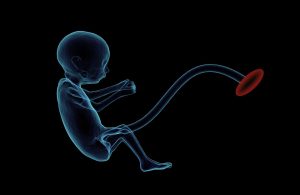
July is awareness month for many things but let’s take a peek into Cord Blood, Juvenile Arthritis, UV Safety, and Sarcoma.
Found in the blood vessels of the placenta and the umbilical cord, cord blood is collected after a baby is born and after the umbilical cord is cut—an important point. Keith Wonnacott, Ph.D., Chief of the Cellular Therapies Branch in FDA’s Office of Cellular, Tissue, and Gene Therapies said the procedure is generally safe for mother and baby because cord blood is typically collected after the baby is delivered and the cord is cut.
Cord blood is approved only for use in “hematopoietic stem cell transplantation” procedures, which are done in patients with disorders affecting the hematopoietic (blood forming) system. Cord blood contains blood-forming stem cells that can be used in the treatment of patients with blood cancers such as leukemias and lymphomas, as well as certain disorders of the blood and immune systems, such as sickle cell disease and Wiskott-Aldrich syndrome.
In many cancer patients, the disease is found in the blood cells. Chemotherapy treatment of these patients kills both cancer cells and the healthy blood-forming stem cells. Transplanted stem cells from cord blood can help regrow the healthy blood cells after the chemotherapy.
However, cord blood is not a cure-all.
“Because cord blood contains stem cells, there have been stem cell fraud cases related to cord blood,” says Wonnacott. “Consumers may think that stem cells can cure any disease, but science doesn’t show this to be the case. Patients should be skeptical if cord blood is being promoted for uses other than blood stem cell regeneration (fda.gov., Cord Blood: What You Need to Know).”

Juvenile idiopathic arthritis (JIA) is a form of arthritis in children. Arthritis causes joint swelling (inflammation) and joint stiffness. JIA is arthritis that affects one or more joints for at least 6 weeks in a child age 16 or younger.
Unlike adult rheumatoid arthritis, which is ongoing (chronic) and lasts a lifetime, children often outgrow JIA. But the disease can affect bone development in a growing child. Like adult rheumatoid arthritis, JIA is an autoimmune disease. This means the body’s immune system attacks its own healthy cells and tissues. JIA is caused by several things. These include genes and the environment. This means the disease can run in families, but can also be triggered by exposure to certain things
Key points about juvenile idiopathic arthritis
- JIA is a form of arthritis in children ages 16 or younger. It causes joint inflammation and stiffness for more than 6 weeks.
- The disease may affect a few joints or many joints. It may cause symptoms all over the body.
- The most common symptoms include swollen, stiff, warm, red, and painful joints.
- Treatment options include medicines, physical therapy, healthy eating and exercise, eye exams, and rest (hopkinsmedicine.org).

July is UV Safety Awareness Month, but it is also important to remember skin protection throughout the whole year. Your skin is your body’s largest organ. It protects you against heat, sunlight, injury, and infection. The sun’s ultraviolet (UV) rays can damage your skin in as little as 15 minutes yet some of us don’t consider the necessity of protecting our skin. By using a layered approach for sun protection consisting of shade, clothing, a hat, sunglasses and sunscreen, we can significantly reduce our exposure and risk for skin cancer. According to the Centers for Disease Control, skin cancer is the most common cancer in the United States, however, most skin cancers are preventable. Every year, nearly five million people are treated for skin cancer at a cost of more than $8 billion. There are about 72,000 new cases of which 9,000 are melanoma deaths, the deadliest form of skin cancer. It doesn’t matter your skin tone, anyone can get skin cancer (.fs.fed.us, United States Department of Agriculture).

Malignant (cancerous) tumors of the connective tissues are called “sarcomas”. There are more than 50 sub-types of sarcoma. According to the American Cancer Society, about 11,280 people will be diagnosed with sarcoma this year and slightly more men than women develop soft tissue sarcoma. Sarcomas are cancers that are much more likely to affect children and young adults than many other more common cancers. Sarcoma is a very rare disease. Due to its rarity, it is crucial for patients to seek a cancer specialist in the treatment of their disease. Sarcoma arises in the connective tissue of the body. The connective tissue includes muscle, bone, fat, nerve, cartilage, blood vessel, and deep skin tissue. Connective tissue is present throughout the body, so sarcoma can occur in any location (rogelcancercenter.org).



